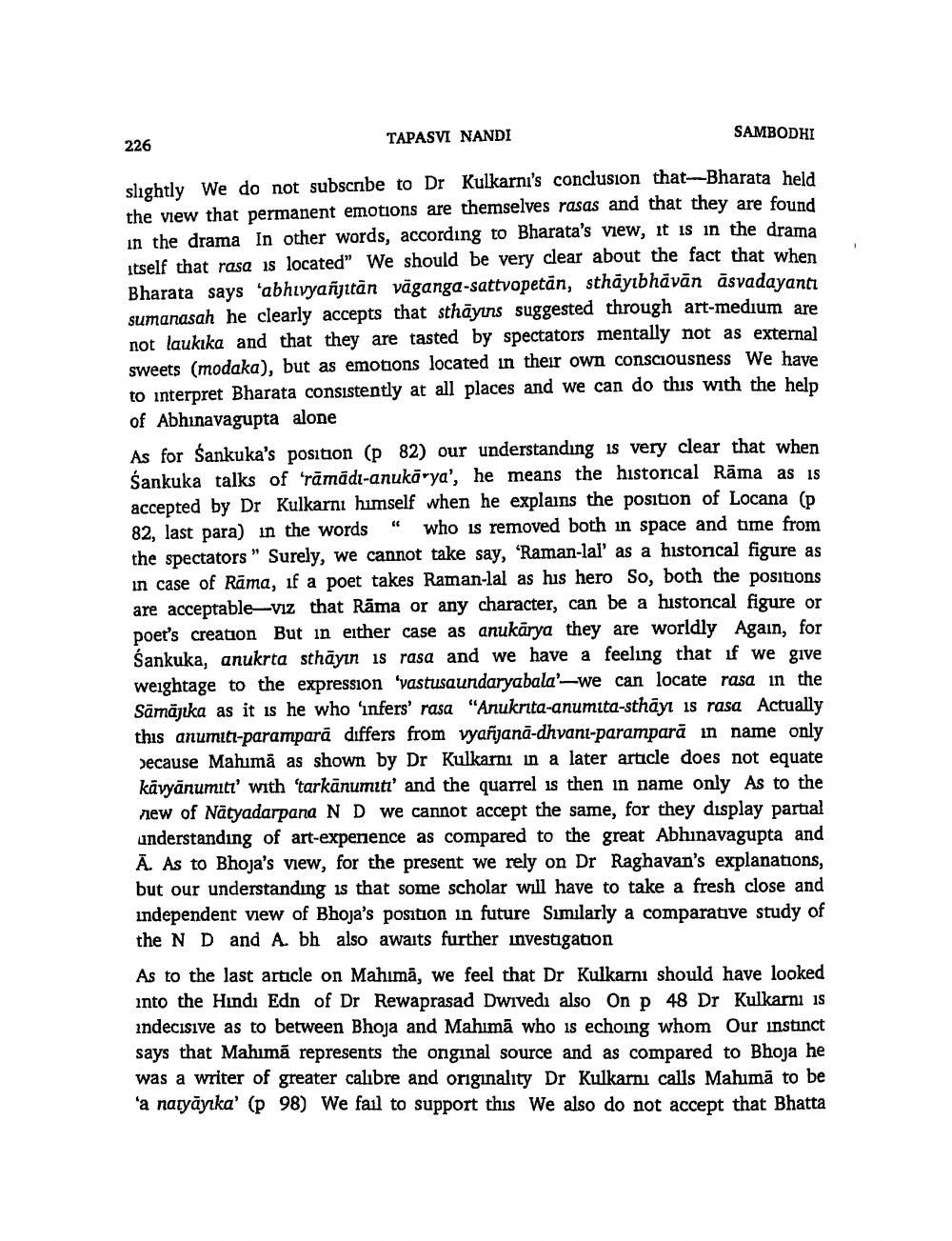________________
226
TAPASVI NANDI
SAMBODHI
slightly We do not subscribe to Dr Kulkarni's conclusion that-Bharata held the view that permanent emotions are themselves rasas and that they are found in the drama In other words, according to Bharata's view, it is in the drama itself that rasa is located" We should be very clear about the fact that when Bharata says "abhivyañjitan väganga-sattvopetan, sthāyıbhāvān asvadayanti sumanasah he clearly accepts that sthāyins suggested through art-medium are not laukika and that they are tasted by spectators mentally not as external sweets (modaka), but as emotions located in their own consciousness We have to interpret Bharata consistently at all places and we can do this with the help of Abhinavagupta alone As for Sankuka's position (
p82) our understanding is very clear that when Śankuka talks of “rāmādı-anukārya', he means the historical Rāma as is accepted by Dr Kulkarnı himself when he explains the position of Locana (p 82, last para) in the words " who is removed both in space and time from the spectators” Surely, we cannot take say, "Raman-lall as a historical figure as in case of Rāma, if a poet takes Raman-lal as his hero So, both the positions are acceptable-VIZ that Rāma or any character, can be a historical figure or poet's creation But in either case as anukārya they are worldly Again, for Śankuka, anukrta sthāyın is rasa and we have a feeling that if we give weightage to the expression 'vastusaundaryabala'—we can locate rasa in the Sāmājika as it is he who 'infers' rasa "Anukrita-anumita-sthāyı is rasa Actually this anumiti-paramparā differs from vyañjanā-dhvani-parampară in name only because Mahimā as shown by Dr Kulkarnı in a later article does not equate kävyänumitt' with 'tarkānumiti' and the quarrel is then in name only As to the niew of Nätyadarpana N D we cannot accept the same, for they display partial understanding of art-expenence as compared to the great Abhinavagupta and Ā. As to Bhoja's view, for the present we rely on Dr Raghavan's explanations, but our understanding is that some scholar will have to take a fresh close and independent view of Bhoja's position in future Similarly a comparative study of the N D and A. bh also awaits further investigation As to the last article on Mahımā, we feel that Dr Kulkarni should have looked into the Hindi Edn of Dr Rewaprasad Dwivedi also On p 48 Dr Kulkarni is indecisive as to between Bhoja and Mahimā who is echoing whom Our instinct says that Mahimă represents the onginal source and as compared to Bhoja he was a writer of greater calibre and originality Dr Kulkarni calls Mahimā to be 'a natyāyka' (p 98) We fail to support this We also do not accept that Bhatta




